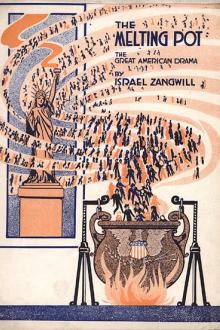No Modernism Without Lesbians, Diana Souhami [love books to read txt] 📗

- Author: Diana Souhami
Book online «No Modernism Without Lesbians, Diana Souhami [love books to read txt] 📗». Author Diana Souhami
In Paris, Joyce’s phone rang non-stop with congratulatory calls. Lucia said ‘I’m the artist’ and cut the wires. They were mended and she cut them again. Random House New York and Bodley Head in London rushed into production. With huge advance free publicity, they sold 35,000 copies of Ulysses in the first three months. Joyce received 45,000 dollars in royalties. Sylvia got nothing. ‘As for my personal feelings well, one is not at all proud of them,’ she said.
what to do with Lucia
Doctors thought Lucia would benefit if separated from her parents. In spring 1935 she was sent to stay with cousins in Bray, a seaside town near Dublin. She made a peat fire on the living room carpet, turned on the gas tap in the middle of the night, tried to unbutton the trousers of her cousin’s boyfriend, then left without saying where she was going. She went to Dublin, gave away her clothes and possessions and slept rough. ‘She lived like a gypsy in squalor,’ Joyce said. When found, she herself asked to be admitted to hospital. Harriet Weaver paid for her to be treated at St Andrew’s hospital in Northampton, where a Dr Macdonald gave her ‘glandular injections’. She then convalesced in a cottage in Tadworth in Surrey with Harriet, who hired a trained nurse to look after her.
When she returned home, the Joyces had her admitted to an asylum in Ivry, 5 kilometres south of Paris. She was twenty-eight. She never again lived outside of an institution. For forty-seven years, until her death, she stayed incarcerated in sanatoria in France, Switzerland and England. Joyce wanted to bring her home but Nora could not accept this.
something must be done
By 1935, Sylvia was fearful of bankruptcy and the closing down of Shakespeare and Company. To raise money, she sold her rare books and some of Joyce’s manuscripts. Friends donated and took out additional subscriptions. Bryher gave her $1,400 and bought one of the Blake drawings acquired by Sylvia in 1919 from Charles Elkin Mathews but insisted it stay in the shop. Anxiety made Sylvia ill. ‘Attacks of migraine stopped her in her tracks’, her friend, the writer Katherine Anne Porter said.
‘Something must be done’ was André Gide’s view. He had been the first customer at Shakespeare and Company and he could not contemplate the shop closing. Writers could not do without it or Sylvia. With André Malraux, under the banner of the International Association of Writers for the Defence of Culture, he organized a rally and presented a petition to the government appealing for help. This request was declined because Sylvia was not a French citizen. With Paul Valéry and Jules Romains, Gide then created The Friends of Shakespeare and Company. Two hundred members paid a subscription of 200 francs a year or more to support the shop and attend readings there by French and American writers. Simone de Beauvoir joined on 4 September 1935 and borrowed scores of titles. The largest donations came from Sylvia’s childhood friend, Carlotta Welles, and, as ever, from Bryher.
Mussolini invaded Ethiopia in the summer of 1936. The tone of the little magazines grew dark, concerned more with the evil of fascism and the conflagration of war than with innovations of style. Shakespeare and Company stocked New Masses, New Statesman and Die Rote Front (‘The Red Front’) alongside the literary journals.
a visit to America
For Sylvia, the joy of her book plan was ended. Nor was she well. In August 1936 she made her first visit back to America in twenty-two years to meet with her father and sisters in Altadena, California, to celebrate his eighty-fourth birthday. He paid for her flight. She also wanted medical treatment in New York. She closed the shop for two months, leaving a temporary assistant, Margaret Newitt, to act as a casual caretaker. Adrienne took a holiday in Venice with the photographer Gisèle Freund.
In California, Sylvia stayed with Cyprian, whom she had not seen for thirteen years, and her partner, Jerry. Holly was with her husband, Frederic Dennis, and their three-year-old son. After the family reunion, Sylvia moved on to New York. She had a hysterectomy and radium treatment but did not record details of what was wrong. While in the city she met with the publisher Alfred Knopf, who voiced interest in her memoirs. Ten years went by before she wrote her slim classic Shakespeare and Company. At Bryher’s insistence she also met up with the poet Marianne Moore, with whom she had corresponded for years. Sylvia said of her: ‘She looks like a little old maid school marm but only at first. When you take a good look at her and hear her talk she is unique and fascinating.’ Marianne Moore gave Sylvia a photograph of herself inscribed: ‘To courageous generous unselfish wilful Sylvia Beach.’ She was working on an article for The Nation on Gertrude Stein, and she took Sylvia to a performance of Macbeth in Brooklyn with an all-black cast.
After two months away, and weakened by hospital treatment, Sylvia returned to Paris in October 1936, to what she called her ‘problematic little business’. The franc was devalued, Hemingway was fighting in the Spanish civil war, Bryher was using her money to finance the escape of Jewish psychiatrists and intellectuals from Austria and Germany, the talk was of a European war and Gisèle had moved in with Adrienne.
Gisèle Freund
Sylvia found her relationship of fifteen years downgraded.





Comments (0)